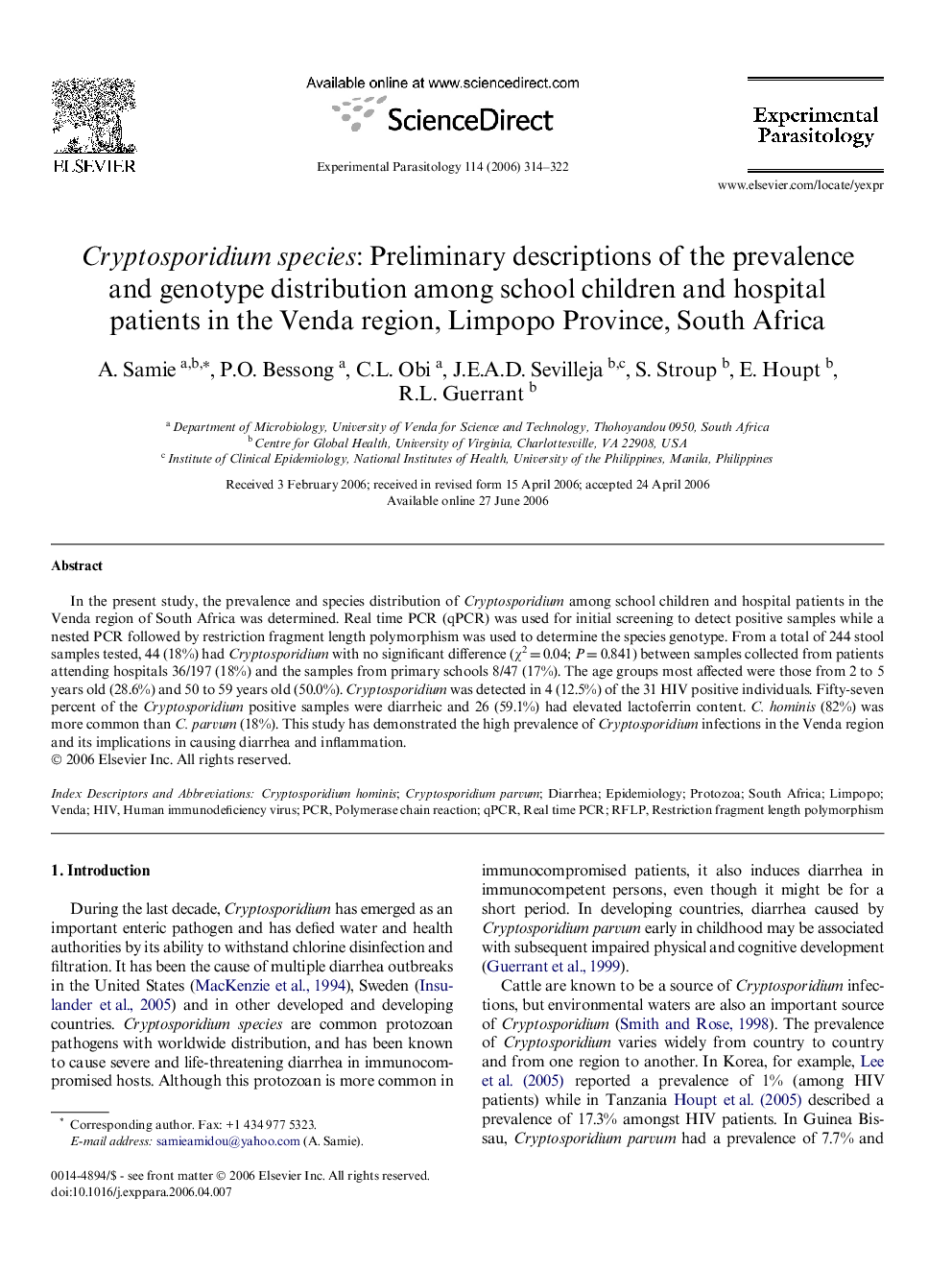| Article ID | Journal | Published Year | Pages | File Type |
|---|---|---|---|---|
| 4372121 | Experimental Parasitology | 2006 | 9 Pages |
In the present study, the prevalence and species distribution of Cryptosporidium among school children and hospital patients in the Venda region of South Africa was determined. Real time PCR (qPCR) was used for initial screening to detect positive samples while a nested PCR followed by restriction fragment length polymorphism was used to determine the species genotype. From a total of 244 stool samples tested, 44 (18%) had Cryptosporidium with no significant difference (χ2 = 0.04; P = 0.841) between samples collected from patients attending hospitals 36/197 (18%) and the samples from primary schools 8/47 (17%). The age groups most affected were those from 2 to 5 years old (28.6%) and 50 to 59 years old (50.0%). Cryptosporidium was detected in 4 (12.5%) of the 31 HIV positive individuals. Fifty-seven percent of the Cryptosporidium positive samples were diarrheic and 26 (59.1%) had elevated lactoferrin content. C. hominis (82%) was more common than C. parvum (18%). This study has demonstrated the high prevalence of Cryptosporidium infections in the Venda region and its implications in causing diarrhea and inflammation.
